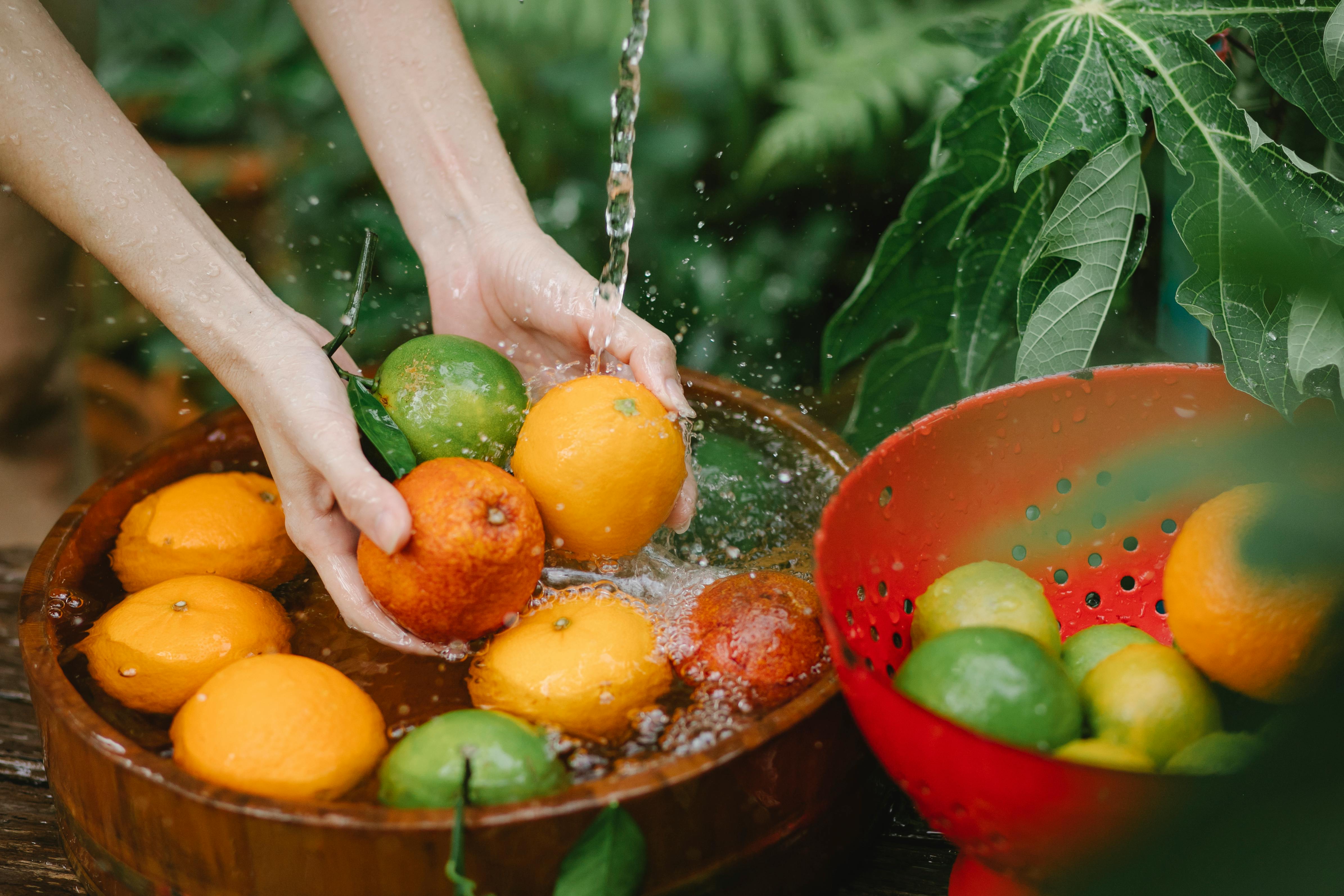Distilled water is an effective way to purify water, as it removes any contaminants, bacteria, and other impurities. However, although distilled water is free of these impurities, it has some drawbacks. It can be acidic and lacks essential minerals and electrolytes that are important for a healthy body. Fortunately, there are a few simple ways to make distilled water healthier for consumption. In this guide, we will look at how to make distilled water healthier by adding minerals and electrolytes. We will also discuss the benefits of drinking distilled water and any potential risks associated with it.The consumption of distilled water offers a variety of health benefits. Firstly, it is free from any contaminants, which makes it safe for consumption. Distilled water does not contain any minerals or chemicals, which can otherwise be found in regular tap water. This makes it an ideal choice for people with sensitive digestive systems and allergies. Secondly, drinking distilled water can help to rid the body of toxins that build up over time. The process of distillation eliminates impurities from the water, leaving behind clean and pure H2O. Lastly, drinking distilled water helps to keep the body hydrated without introducing additional minerals into the body that can lead to dehydration. This makes it an ideal choice for athletes and people who work out regularly as it helps them stay hydrated without having to worry about dehydration or other electrolyte imbalances.
What to Add in Distilled Water to Make it Healthy
Distilled water is water that has been purified through a distillation process to remove impurities such as bacteria, salts, viruses and other organic and inorganic compounds. Although it is free from contaminants, distilled water lacks essential minerals and electrolytes. To make distilled water healthy for drinking, adding minerals or electrolytes is recommended.
Adding minerals such as calcium, magnesium, potassium and sodium can help balance the acidity of the water while providing essential nutrients to the body. Minerals can be added in the form of tablets or powder directly into the distilled water. Alternatively, you can also add mineral drops or a mineral-rich liquid supplement to the distilled water.
Electrolytes are an important component of healthy hydration as they help replenish lost fluids and electrolytes during physical activity or when ill. Electrolyte tablets or powder can be added directly into your distilled water for an instant boost of vital nutrients. You can also add electrolyte drops or a natural liquid supplement to the distilled water for better hydration benefits.
How to Purify Water at Home
Purifying water is a simple process that can be done at home. There are several options for purifying water, depending on the type of water and how much you need to purify. The most common methods for purifying water are boiling, using a water filter, using activated charcoal, or using ultraviolet light.
Boiling is one of the easiest methods of purifying water. All you need to do is bring the water to a rolling boil for at least one minute and let it cool before drinking. This will kill any bacteria or parasites in the water. Boiling is especially effective if you are in an area with limited resources and don’t have access to a filtration system or other purification methods.
Using a water filter is another way to purify your drinking water at home. There are many different types of filters available, ranging from basic pitcher filters to advanced reverse osmosis systems. Filters can remove sediment, bacteria, and other contaminants from your drinking water. When buying a filter, make sure it is certified by an independent testing agency such as NSF International or WQA (Water Quality Association
Distilled vs. Regular Tap Water
When it comes to what type of water you should drink, the choice is often between distilled and regular tap water. While both contain essential minerals and hydrate the body, they vary in their mineral content and purity levels.
Distilled water is created through an evaporation process that removes impurities like bacteria, minerals, and chemicals from the water. This process makes it purer than regular tap water, but also removes many of the beneficial minerals like calcium and magnesium that are naturally found in tap water.
Regular tap water, on the other hand, contains minerals that are beneficial for health. Depending on where you live, your tap may contain fluoride to help with dental health or other additives to make it safer to drink. Regular tap also contains naturally occurring trace elements such as calcium and magnesium which can be beneficial for those who don’t get enough of these nutrients through food sources alone. However, it also contains contaminants such as chlorine or heavy metals which can be harmful if consumed over long periods of time.
In conclusion, both distilled and regular tap water have their advantages and disadvantages when it comes to hydration and

Substitutes for Distilled Water in Cooking and Cleaning
Distilled water is often used for cooking and cleaning as it is free of minerals and other impurities. However, if you don’t have access to distilled water, there are some suitable alternatives. Rainwater is one of the most popular substitutes for distilled water as it is also free from impurities. Rainwater can be collected in a rain barrel or by using rain gutters attached to your home or building. Another option is to use spring water, which is naturally filtered through rocks and soil before reaching the surface of the earth. Spring water can also be purchased in bottles at many stores. If you don’t have access to either rainwater or spring water, you can also use tap water that has been filtered by an activated carbon filter. This will remove many of the minerals and other impurities from the tap water, making it suitable for cooking and cleaning. Finally, if you don’t have access to any of these options, you can boil regular tap water to distill it yourself. Boiling the water will remove many of the impurities, making it suitable for use in cooking and cleaning.
Are There Any Risks to Drinking Distilled Water?
Distilled water is a popular choice for people looking for a pure, clean drinking water option. It is made by boiling water and collecting the vapor, which contains only water molecules and none of the impurities that can be found in tap or spring water. While distilled water is free of contaminants, there are still some potential risks associated with drinking it.
One of the main concerns about distilled water is that it lacks many of the essential minerals found in other types of drinking water. These minerals are important for maintaining proper health and can help prevent certain diseases and health conditions. By drinking only distilled water, you may not be getting enough of these minerals in your diet.
Another risk associated with drinking distilled water is that it can have a lower pH level than other types of drinking water. This means that it can be slightly acidic, which can lead to an increased risk of tooth decay and digestive problems. While this isn’t usually an issue if you consume a balanced diet, it’s something to consider if you’re relying solely on distilled water for hydration.
Finally, many people worry about the contaminants removed from
Why Is Distilling a Good Way to Purify Water?
Distilling is a process that is used to purify water by removing certain contaminants, such as bacteria, minerals, and other pollutants. The process involves boiling the water and then condensing it into a clean and pure form. This makes it an effective way to purify water, since it kills off any living organisms that may be present. Additionally, distilling removes dissolved solids from the water, leaving behind only pure H2O.
The process of distillation is relatively simple and can be done using either a pot still or a column still. A pot still involves boiling the water in an enclosed container until the steam rises and then collecting the condensed liquid in a separate container. A column still is more efficient at removing impurities than a pot still, as it uses multiple columns of heated liquid to collect the condensed steam.
One of the major benefits of distilling water is that it can remove most contaminants present in the source water, including bacteria, viruses, metals, minerals and other pollutants. Additionally, it removes dissolved solids such as salts and

Conclusion
The process of distilling water to make it safe for human consumption is a viable option in many cases. It is relatively straightforward and easy to do, and it has the potential to provide a safe source of water for many people who otherwise may not have access to clean drinking water. However, it is important to understand the potential risks associated with distilled water so that appropriate measures can be taken to ensure its safety.
One potential issue with distilled water is its lack of essential minerals and electrolytes; while this can be addressed by adding them back into the water after distillation, it is important to ensure that the proper amounts are added. Additionally, some studies suggest that distilled water may increase the risk of certain health conditions due to its low mineral content.
Finally, while distillation can be an effective way of making contaminated or polluted water safe for human consumption, it may not be able to remove all contaminants from the water. Therefore, it is important to take additional steps such as filtration or chemical treatment in order to ensure that the water being consumed is free from harmful impurities.
In conclusion, distillation can provide a safe

